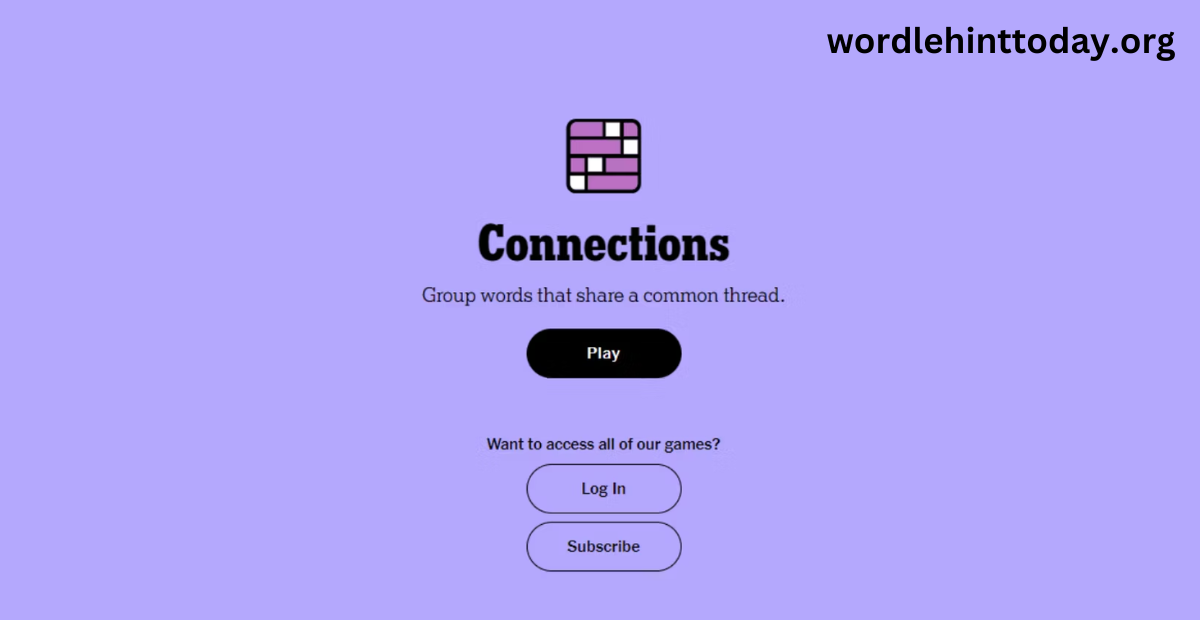In an era where information flows faster than ever, the way we consume news has evolved dramatically. Traditional newspapers have had to adapt to the digital landscape, and one prominent player in this transition is The New York Times. Among its innovative offerings is the concept of “New York Times Connections,” which aims to enhance reader engagement and redefine how news is consumed. This blog post will explore what New York Times Connections is, how it works, and its implications for journalism and news consumption in the modern age.
Understanding New York Times Connections
New York Times Connections is a feature that brings together various aspects of news and information, fostering a more interactive and engaging experience for readers. It is designed to create a community of informed readers, encouraging discussions, sharing insights, and offering a platform for diverse opinions. The idea is not just to deliver news but to create a dialogue around it, making the reading experience richer and more meaningful.
The Importance of Connections
In the digital age, readers are not just passive consumers of news; they want to engage with the content actively. The New York Times recognized this shift and developed Connections to address the growing need for community and interaction among readers. This initiative emphasizes the importance of building connections, both between readers and the news and among readers themselves.
By fostering a sense of community, The New York Times aims to transform news consumption from a solitary activity into a shared experience. This approach not only enhances reader engagement but also promotes a deeper understanding of the issues at hand. When readers discuss and share their perspectives, they contribute to a more nuanced discourse surrounding current events.
Also Read : Understanding IP Address 111.190.150.204: Key Details and Applications
Features of New York Times Connections
The New York Times Connections offers a variety of features designed to enhance the reading experience:
1. Interactive Discussions
One of the core components of Connections is its focus on interactive discussions. Readers can engage with articles by leaving comments, sharing their opinions, and responding to others. This feature allows for a dynamic exchange of ideas, encouraging readers to think critically about the news and consider multiple viewpoints.
2. Curated Content
Connections also provides curated content that highlights important articles, opinion pieces, and analyses. By curating content, The New York Times helps readers navigate the vast sea of information available online, directing them to the most relevant and impactful pieces. This curation fosters a deeper understanding of complex issues and ensures that readers are well-informed.
3. User-Generated Content
Another innovative aspect of Connections is its emphasis on user-generated content. Readers can contribute their insights, experiences, and perspectives related to specific news topics. This not only enriches the discussion but also empowers readers to take an active role in the news narrative. By sharing their stories, readers add a personal touch to the news, making it more relatable and engaging.
4. Real-Time Updates
In today’s fast-paced world, staying updated is crucial. New York Times Connections provides real-time updates on breaking news, allowing readers to stay informed as events unfold. This immediacy enhances the relevance of the news and keeps readers engaged with ongoing stories.
5. Community Building
Connections fosters community building among readers. Through forums, discussion groups, and shared interests, readers can connect with like-minded individuals, fostering a sense of belonging. This community aspect is particularly important in an age where many feel isolated, as it creates a space for meaningful interactions around shared interests.
The Impact on Journalism
The introduction of New York Times Connections has significant implications for the field of journalism. It challenges traditional notions of reporting by emphasizing interaction and community engagement. Here are some ways Connections is reshaping journalism:
1. Promoting Transparency
By encouraging discussions and user-generated content, Connections promotes transparency in journalism. Readers can question the information presented, share their thoughts, and engage in constructive debates. This level of transparency builds trust between the publication and its audience, fostering a healthier relationship with the news.
2. Encouraging Diverse Perspectives
Connections allows for a variety of voices to be heard. By giving readers a platform to express their opinions, The New York Times promotes diversity in perspectives. This diversity enriches the discourse surrounding important issues and helps combat echo chambers, where individuals only encounter views that align with their own.
3. Adapting to Reader Preferences
As audience preferences evolve, traditional journalism must adapt. The New York Times Connections is a response to the demand for more interactive and engaging content. By listening to its readers and understanding their needs, The New York Times demonstrates its commitment to providing relevant and meaningful news experiences.
4. Emphasizing Critical Thinking
Connections encourages readers to think critically about the news. Through discussions and curated content, readers are prompted to analyze information, question sources, and engage in thoughtful debates. This emphasis on critical thinking is vital for a well-informed public, especially in an age of misinformation.
The Future of News Consumption
The evolution of New York Times Connections represents a broader trend in news consumption. As readers seek more interactive and engaging experiences, traditional news outlets must continue to innovate. Here are some potential future directions for news consumption:
1. Increased Personalization
As algorithms and data analytics improve, news organizations may offer more personalized content tailored to individual preferences. By leveraging user data, outlets can curate articles, discussions, and recommendations that align with readers’ interests, fostering a more relevant news experience.
2. Enhanced Multimedia Integration
Incorporating multimedia elements such as videos, podcasts, and infographics can further enrich the news experience. By combining different formats, news outlets can cater to diverse learning styles and preferences, making news consumption more engaging and accessible.
3. Community-Driven Journalism
The rise of community-driven journalism may reshape how news is produced and consumed. Readers may take a more active role in reporting and sharing stories, leading to a more grassroots approach to journalism. This shift could empower local communities and provide a platform for underrepresented voices.
4. Focus on Media Literacy
As misinformation becomes increasingly prevalent, there will likely be a growing emphasis on media literacy education. News organizations may take on the responsibility of educating their audiences about how to critically evaluate information, discern credible sources, and engage in responsible news consumption.
5. Global Collaboration
The digital age has blurred geographical boundaries, allowing for global collaboration in journalism. News outlets may increasingly partner with international organizations to share stories, perspectives, and insights. This collaboration could lead to a more comprehensive understanding of global issues and foster international dialogue.
Conclusion
New York Times Connections represents a significant shift in how news is consumed and engaged with in the modern era. By fostering a sense of community, promoting interactive discussions, and encouraging diverse perspectives, The New York Times has redefined the news experience. As we move forward, it will be essential for news organizations to continue adapting to the evolving landscape of information consumption, embracing innovation while maintaining journalistic integrity.
In an age where connection and engagement are paramount, the future of news will depend on our ability to create meaningful dialogues around the stories that shape our world. Through initiatives like New York Times Connections, we can look forward to a more informed, engaged, and connected society. Whether you’re a longtime reader or new to the platform, embracing this interactive approach to news consumption can enrich your understanding of the world around you.
Also Read :Tommy Taffy Wiki: A Comprehensive Overview | Understanding IP Address 111.190.150.204: Key Details and Applications
FAQs about New York Times Connections
1. What is New York Times Connections?
New York Times Connections is an interactive feature that enhances reader engagement by fostering discussions, curating content, and encouraging user-generated insights around news articles.
2. How does New York Times Connections work?
Connections allows readers to engage with articles through comments, discussions, and shared insights. It provides curated content, real-time updates, and a platform for readers to connect and share their perspectives.
3. Why is community engagement important in news consumption?
Community engagement allows readers to exchange ideas and diverse perspectives, enriching the discourse around important issues and combating echo chambers.
4. What types of content can I find in Connections?
Connections features a mix of curated articles, opinion pieces, interactive discussions, and user-generated content, all aimed at fostering a deeper understanding of current events.
5. Can I contribute my own content to New York Times Connections?
Yes, readers are encouraged to share their insights and perspectives related to news topics, allowing for a more personal touch and diverse viewpoints.
6. How does New York Times ensure the quality of discussions?
The New York Times moderates discussions and encourages constructive dialogue to maintain a respectful and informative environment.




